Living or traveling in remote areas presents unique challenges that few urban drivers have to consider. Among the most critical is vehicle reliability and the ability to perform maintenance or repairs without immediate access to professional mechanics or advanced diagnostic tools.
In isolated locations—whether deep in mountainous regions, sprawling deserts, dense forests, or far-flung rural settlements—having a dependable vehicle that can be fixed with basic tools and minimal technical knowledge is not just a convenience; it’s often a matter of survival.
When help is hours or even days away, a mechanical breakdown can mean being stranded without shelter, supplies, or communication. Therefore, the type of vehicle chosen for such conditions must prioritize durability, simplicity, and versatility above all else.
The modern automotive world is increasingly dominated by sophisticated electronics, complex engine management systems, and delicate sensors. While these innovations enhance efficiency, comfort, and safety in well-serviced urban environments, they often prove problematic in remote locations.
Electronic malfunctions can be challenging to diagnose without specialized equipment, and replacement parts may be hard to source. Consequently, vehicles that rely heavily on computerized systems are less suited for areas where professional repair facilities are scarce or nonexistent.
Instead, off-roaders, adventurers, and rural dwellers tend to favor rugged, mechanically simple vehicles designed in an era when reliability and ease of repair were paramount.
These vehicles embody a philosophy that values tried-and-true engineering solutions—simple engines, body-on-frame construction, manual or mechanically controlled four-wheel-drive systems, and minimal electronic dependency.
This article explores ten vehicles that excel in remote conditions where mechanics are few and far between. These cars have proven themselves over decades of tough use, often in some of the harshest environments on Earth.
They combine mechanical resilience, ease of maintenance, and off-road capability, allowing owners to perform essential repairs themselves and continue their journeys or daily lives with minimal disruption.
From legendary trucks like the Toyota Land Cruiser and the Jeep Wrangler to versatile SUVs like the Isuzu Trooper and Mitsubishi Pajero, each vehicle on this list offers a unique set of strengths tailored to remote living and exploration.
The Toyota Land Cruiser, with its enduring legacy of dependability and mechanical simplicity, sets the gold standard for rugged vehicles worldwide. The Jeep Wrangler follows closely with its iconic design and vast aftermarket support, making repairs and upgrades accessible even in isolated areas.
The Land Rover Defender brings military-grade toughness and repairability, while the Ford F-150 offers a powerful, straightforward truck platform that has been the backbone of rural communities for decades. Compact yet capable, the Suzuki Jimny demonstrates that size is no barrier to off-road prowess and mechanical reliability.
The next five vehicles continue this theme of rugged practicality. The Mercedes-Benz G-Class, especially older military variants, showcases German engineering built to last in extreme conditions. The Nissan Patrol’s combination of torque-rich engines and durable chassis makes it a favorite in deserts and outbacks.
The Isuzu Trooper and Mitsubishi Pajero provide practical SUVs that balance durability with comfort, while the Land Rover Discovery strikes a middle ground between capability and refinement, suitable for remote travel when maintained properly.
Ultimately, the best vehicle for a remote area is one that can be trusted not only to endure the terrain but also to be understood and repaired by its owner or a local mechanic without needing a dealer visit. These ten cars embody that principle and offer invaluable lessons about the importance of simplicity, robustness, and community knowledge in vehicle maintenance.
Whether you live in a remote village, work in an off-grid setting, or are planning an extended overland expedition, selecting the right vehicle can mean the difference between freedom and frustration. This guide is designed to help you make that choice with confidence, emphasizing the timeless qualities that make a car truly perfect for remote areas with no mechanics.
Also read: 5 Cars With Remote Kill Features and 5 That Keep Running After Theft
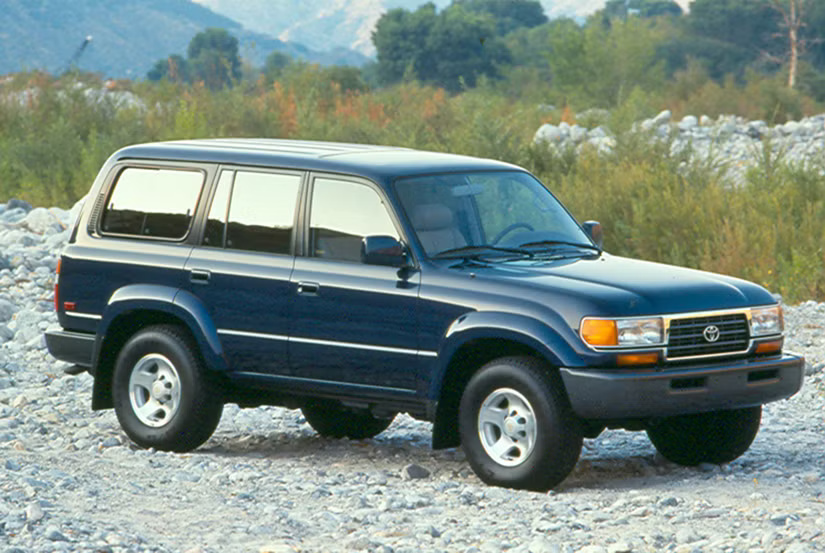
1. Toyota Land Cruiser (Older Models)
The Toyota Land Cruiser, particularly the iconic 60, 70, and 80 series, has built an almost mythical reputation in the world of rugged, reliable off-road vehicles. For decades, it has been the go-to choice for adventurers, humanitarian organizations, military operations, and rural residents living far from urban centers or professional automotive services.
What makes the Land Cruiser truly stand out in remote areas is its unmatched combination of robust engineering, mechanical simplicity, and an almost indestructible build quality.
Unlike many modern vehicles that rely heavily on complex electronics and computer-controlled systems, these older Land Cruisers utilize proven, mechanical components that can be diagnosed and repaired with basic tools, making them an ideal vehicle for people who may not have immediate access to professional mechanics.
The heart of the Land Cruiser’s appeal lies in its engines, many of which are simple inline six-cylinder gasoline or diesel units known for their durability and ability to run on lower-quality fuel. This is crucial in remote areas where premium fuel is scarce or unavailable.
The diesel variants, in particular, are famed for their torque, fuel efficiency, and resilience, allowing the vehicle to haul heavy loads or tow equipment across unforgiving terrain. Maintenance tasks such as oil changes, replacing fuel filters, or even fixing minor leaks can be accomplished in the field, empowering owners to keep their vehicle operational for extended periods without professional help.
The vehicle’s parts are widely available around the world, often stocked by local suppliers even in less accessible regions, making it easier to source replacements or essential consumables when needed.
Beyond the engine, the Land Cruiser’s suspension and chassis design contribute significantly to its legendary status. The rugged ladder-frame chassis, combined with solid front and rear axles, provides excellent articulation, durability, and ground clearance, enabling it to traverse rocky trails, deep mud, and uneven surfaces that would easily disable less capable vehicles.
The simple yet effective suspension setup also means fewer components that can fail and easier repairs when damage occurs. Its off-road capability is further enhanced by features like locking differentials in some models, allowing drivers to maintain traction even in the most challenging conditions.
The Land Cruiser’s ability to remain functional and reliable in extreme weather—from arid deserts to freezing mountains—demonstrates why it has earned the nickname “the ultimate overland vehicle.”
The vehicle’s interior and auxiliary systems have traditionally been straightforward, focusing on utility over luxury. This simplicity not only reduces the chance of failures but also makes it easier to maintain the cabin and vehicle controls in harsh conditions where dirt, dust, and moisture are constant threats.
Its spacious cargo area and comfortable seating accommodate long trips into the wilderness or the transport of goods essential for remote living. The Toyota Land Cruiser’s reputation extends well beyond its technical merits—it is a cultural icon among off-roaders, farmers, and explorers, whose stories and experiences have cemented its place as a symbol of dependability.
For anyone living or traveling in remote areas with no ready mechanic support, the Land Cruiser is not just a vehicle—it’s a trusted companion and lifeline.
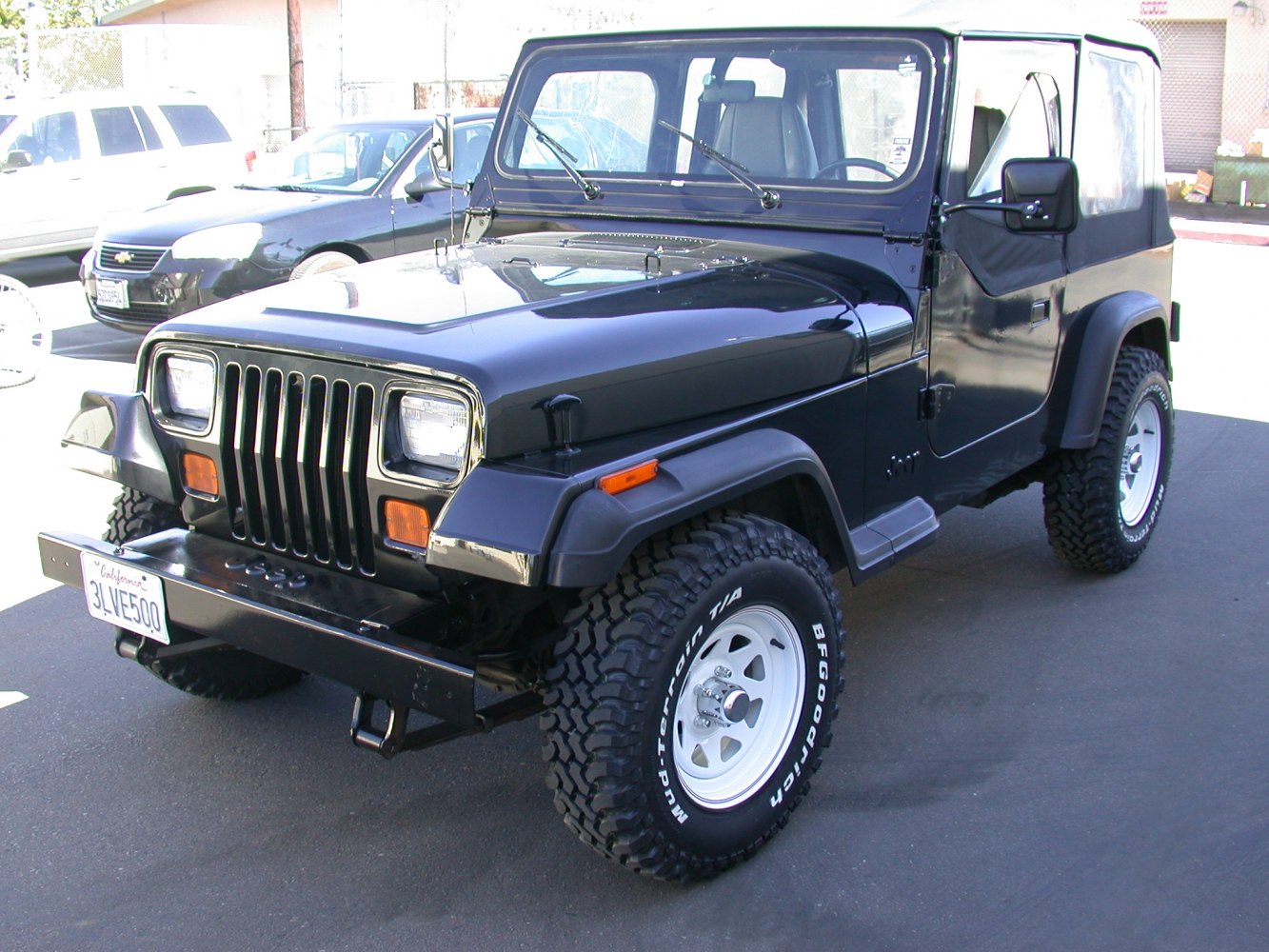
2. Jeep Wrangler (TJ and YJ Models)
The Jeep Wrangler, especially the TJ (1997-2006) and YJ (1986-1995) models, is revered by off-road enthusiasts and those living in remote areas for its rugged simplicity and trail-tested reliability. It carries forward the legacy of the original military Jeep, designed for durability and ease of maintenance in difficult and isolated conditions.
What makes these models especially attractive in places with no mechanic support is their mechanical transparency—meaning that almost every component can be visually inspected and repaired without the need for specialized diagnostic equipment or complex electronic modules, which are common in newer vehicles.
The Wrangler’s boxy frame and solid axles are not just for aesthetic appeal; they provide exceptional robustness and resilience to damage. Solid axles deliver superior off-road articulation, allowing the wheels to maintain contact with uneven terrain and maximize traction, critical in mud, sand, or rocky landscapes common in remote areas.
Moreover, the body-on-frame design simplifies repairs by isolating the body from the chassis, so if structural damage occurs, it can often be addressed without full disassembly or replacement of entire sections.
Owners can also benefit from the vast availability of aftermarket parts and accessories, which are often designed for easy installation without the need for dealer visits or professional assistance. This aftermarket support means broken parts can be swapped out with off-the-shelf components or even custom-fabricated replacements, extending the Wrangler’s life indefinitely.
Engine-wise, the inline-six (especially in the TJ models) is famous for its longevity and forgiving nature. These engines can run for hundreds of thousands of miles with basic maintenance like regular oil changes and tune-ups, all of which can be done in the field by non-professionals.
The absence of complicated electronics means that troubleshooting common issues such as ignition problems, fuel delivery interruptions, or cooling system failures can often be done visually or through simple tests. This trait is invaluable in remote regions, where even diagnosing a problem can be daunting without advanced tools.
In addition to mechanical robustness, the Wrangler offers unmatched versatility in remote environments. Its removable doors, fold-down windshield, and soft top options allow owners to adapt to various weather conditions or make maintenance access easier.
Its relatively compact size lets it navigate narrow trails or densely wooded paths where larger trucks or SUVs might struggle. Furthermore, the Jeep’s off-road capabilities are complemented by a strong community of users who often share DIY repair advice, trail tips, and parts sources, making it easier for remote owners to keep their vehicle running.
All these factors combine to make the Jeep Wrangler TJ and YJ models a popular and practical choice for life far from mechanics and urban conveniences.
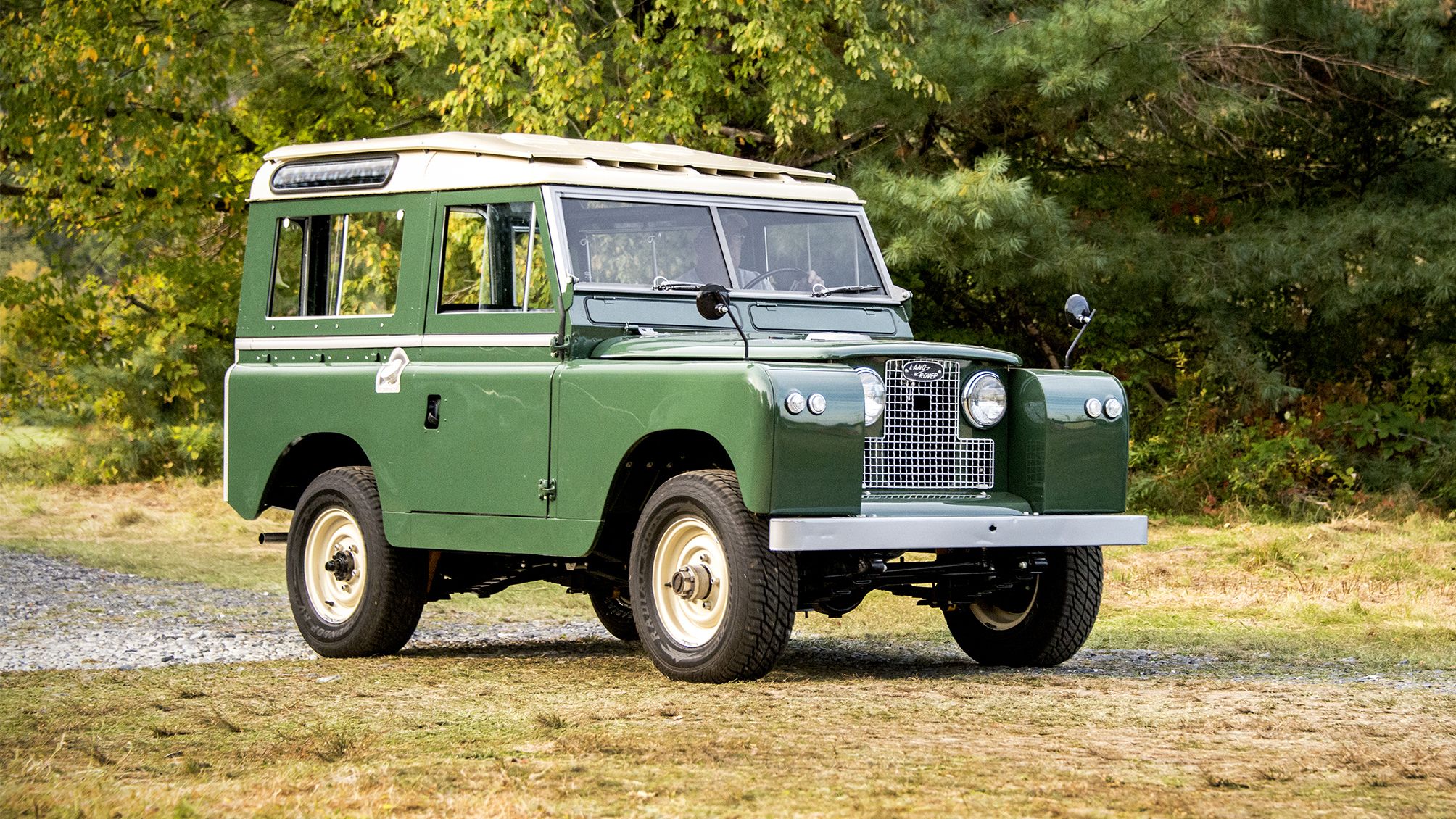
3. Land Rover Defender (Classic Models)
The classic Land Rover Defender holds a revered place in the pantheon of vehicles designed for remote and challenging environments. Born from the Land Rover Series models that were first produced in the late 1940s, the Defender’s rugged simplicity and utility-focused design have been tailored to meet the demands of users in some of the world’s most isolated and inhospitable areas.
Its enduring popularity across Africa, the Australian Outback, and the Middle East stems from its mechanical straightforwardness, ease of maintenance, and unparalleled off-road capability, all critical traits when professional mechanic help is distant or unavailable.
One of the Defender’s defining characteristics is its minimalist design ethos. The vehicle’s boxy frame and utilitarian interior are stripped down to essentials, eliminating unnecessary luxuries that might otherwise increase the risk of failure in extreme conditions.
This minimalism translates into fewer components that can malfunction and simpler repairs. The mechanical components, such as the engine, transmission, and axles, are built to be rugged, with easy access points that enable repairs in the field.
The inline-four or inline-six diesel and gasoline engines found in classic Defenders are known for their longevity and ability to run on less refined fuels, a crucial factor when fuel quality is unpredictable or inferior to urban standards.
The Defender’s chassis and suspension contribute to its legendary status among off-road vehicles. Its ladder frame construction provides a durable backbone that can endure severe torsional stresses from rough terrain, while the live axles with coil springs ensure excellent wheel articulation and comfort over rocky or uneven surfaces.
This combination of features allows the Defender to cross rivers, climb steep inclines, and handle deep mud or sand with confidence. The vehicle’s approach and departure angles, along with a high ground clearance, make it less likely to get stuck or damaged by obstacles, which is vital in remote areas where getting stranded could have serious consequences.
A further advantage of the Defender is the global network of users and enthusiasts who have developed extensive knowledge and a wealth of resources for maintenance and repair. Owners in remote regions often share tips on patching up common issues, fabricating parts, or locating hard-to-find spares.
Despite being known for its simplicity, the Defender also offers remarkable versatility: its spacious cargo area can be outfitted for carrying equipment, camping gear, or even livestock, making it a true multipurpose vehicle for those living off-grid.
In sum, the Land Rover Defender’s blend of mechanical resilience, off-road prowess, and ease of repair makes it a top contender for anyone needing reliable transportation far from mechanic shops.
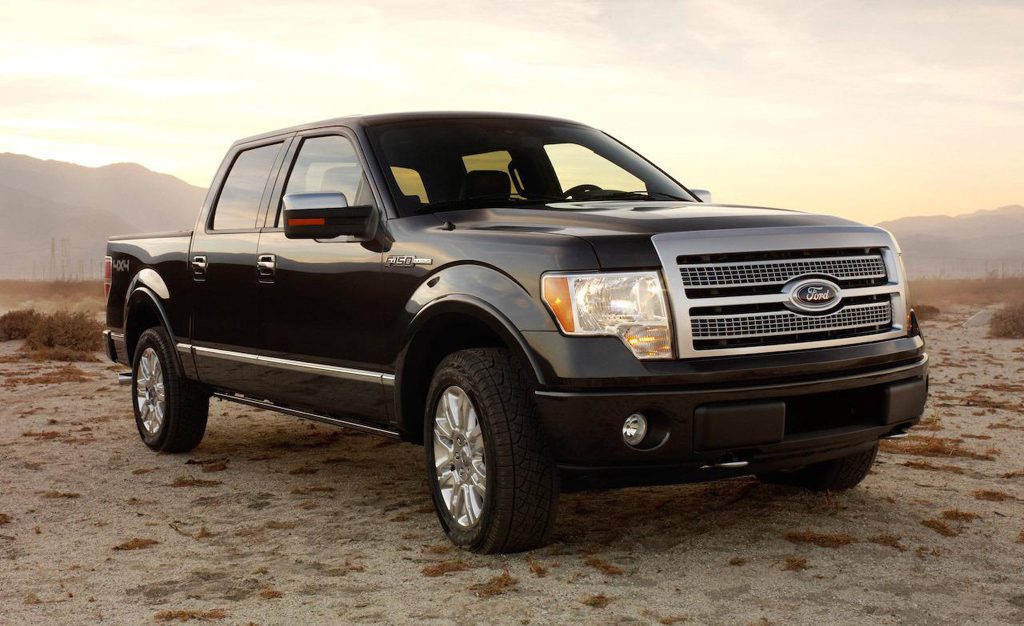
4. Ford F-150 (Older Models)
The Ford F-150, especially models from the 1990s and early 2000s, has long been a staple of rural and remote living, favored for its blend of simplicity, reliability, and rugged capability. As one of the best-selling trucks in North America and globally, the older F-150s are often prized in areas where professional mechanic assistance is limited due to their robust mechanical design and the widespread availability of parts.
These trucks were built in an era when vehicles were less electronically complex and easier to maintain with basic mechanical knowledge, making them ideal for people living far from urban service centers.
One of the key features of the older F-150s is their straightforward powertrains. Many models from this era sported large, naturally aspirated V8 engines with carburetors or simple fuel injection systems that don’t rely on sophisticated sensors or computer modules.
This mechanical simplicity allows for easier troubleshooting of common issues such as fuel delivery problems, ignition faults, or cooling system leaks—problems that might otherwise require expensive diagnostic equipment in newer vehicles.
This ease of repair makes routine maintenance tasks like oil changes, spark plug replacements, and belt adjustments manageable by owners themselves, even without formal mechanical training.
The F-150’s construction and chassis design add to its suitability for remote environments. Its body-on-frame build is strong enough to handle heavy loads and rough terrain without compromising durability. Many versions also come equipped with four-wheel-drive systems that provide traction on slippery, muddy, or uneven surfaces.
The suspension system, while not as specialized as dedicated off-road vehicles, is robust enough to take the abuse of unpaved roads and trails, giving drivers confidence in their vehicle’s ability to endure rough conditions.
Furthermore, the global presence of the F-150 and its vast aftermarket support ensure that spare parts—from filters and brakes to suspension components—are readily available in many regions. This accessibility allows owners in remote locations to find replacements or fabricate solutions locally, reducing the need to rely on distant mechanics.
The large cargo bed offers practical utility for carrying tools, supplies, or firewood, essential for rural living or exploration. Altogether, the older Ford F-150 models offer a reliable, repairable, and versatile vehicle solution for those who live or work in remote areas with limited mechanical support.
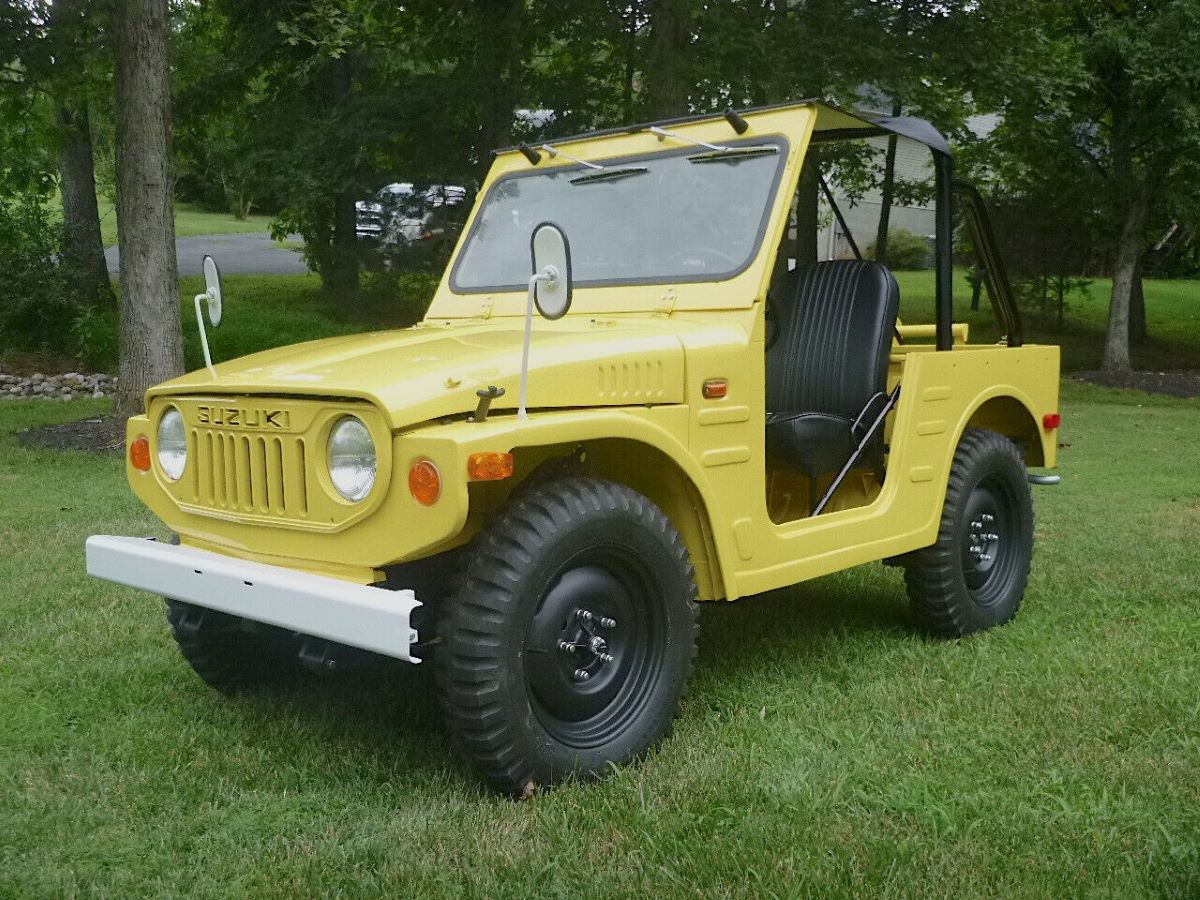
5. Suzuki Jimny (Older Models)
The Suzuki Jimny, especially those produced during the 1980s and 1990s, is a small but remarkably capable off-road vehicle that punches well above its weight in remote and rugged environments.
Its compact size, mechanical simplicity, and solid 4×4 system have made it a favorite for individuals who require nimble transportation capable of navigating tight trails, rocky paths, and muddy tracks without the complexity or maintenance headaches of larger, more modern SUVs. This makes the Jimny an ideal candidate for remote areas with scarce mechanical resources.
Mechanically, the Jimny features a straightforward four-cylinder engine paired with a manual transmission and a part-time four-wheel-drive system that can be engaged via a mechanical lever. This reduces reliance on electronic sensors or automatic systems that can malfunction or require diagnostic tools, which might not be available in off-grid settings.
The ability to manually shift between two-wheel and four-wheel drive, along with low-range gearing, provides drivers with precise control over traction and power distribution, vital for negotiating steep inclines or slippery surfaces. The simple engine design and straightforward fuel system also mean that repairs like carburetor adjustments, timing belt replacements, or ignition troubleshooting can be handled with basic tools.
Despite its small stature, the Jimny’s lightweight frame and solid axle suspension provide excellent off-road capabilities. It can navigate narrow forest trails, cross shallow streams, and tackle rough terrain that larger vehicles might find difficult due to size or weight restrictions.
This agility is complemented by a relatively high ground clearance and short wheelbase, allowing for sharp maneuvering and less risk of getting stuck or damaged. The compact nature of the Jimny also means better fuel efficiency, an important consideration in remote areas where fuel stations may be few and far between.
Maintenance and repair culture surrounding the Suzuki Jimny is strong, with a global community of enthusiasts sharing repair tips, part sources, and DIY modifications to enhance reliability and off-road performance.
Spare parts tend to be affordable and widely available, even in countries where import costs might otherwise make owning an off-road vehicle prohibitive. Its proven track record of longevity, combined with ease of repair, makes the Suzuki Jimny a practical, dependable, and manageable vehicle for anyone living or traveling in remote, mechanic-sparse environments.
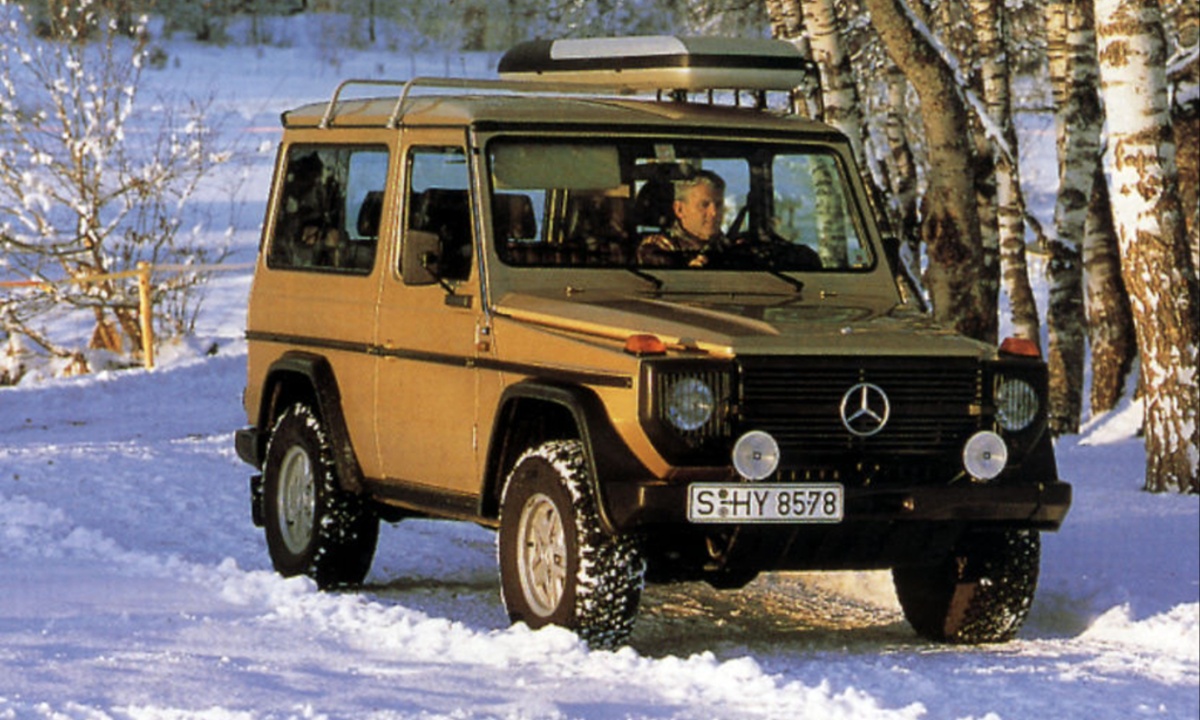
6. Mercedes-Benz G-Class (Older Models)
The Mercedes-Benz G-Class, especially the older military-style models like the 460 series, stands as a testament to engineering durability and straightforward design meant for harsh and remote environments.
Originally developed as a military vehicle, the G-Wagen was engineered to survive conditions that would overwhelm typical civilian vehicles, making it a prime choice for those living far from mechanic support.
Its body-on-frame construction, combined with heavy-duty axles and a ladder chassis, provides an extremely tough platform that can withstand severe off-road conditions and mechanical abuse without frequent breakdowns.
One of the G-Class’s biggest advantages in remote areas is its mechanical simplicity relative to modern luxury SUVs. While it offers robust powertrains such as the naturally aspirated inline-six and V8 engines that are known for longevity, it lacks many of the complex electronic aids and computerized systems that plague newer vehicles.
This means diagnosing problems often boils down to visual inspections and basic mechanical skills, allowing owners to troubleshoot and fix common issues without advanced diagnostic tools. The older G-Class models were designed with maintainability in mind; many components can be accessed and serviced with simple hand tools, which is vital when professional help isn’t an option.
The G-Class’s off-road capabilities are legendary and well-suited to rugged terrains found in deserts, mountains, and remote wildernesses. It features solid axles front and rear, a low-range transfer case, and locking differentials that enable drivers to conquer mud, sand, rocks, and steep slopes.
Its durable suspension system absorbs the shocks and torsional stresses encountered in uneven terrain, ensuring the vehicle remains operational even under extreme conditions. Additionally, the vehicle’s spacious and utilitarian interior is designed to endure harsh climates, with easy-to-clean surfaces and a straightforward layout that minimizes the chance of failures in remote settings.
Beyond technical merits, the G-Class benefits from a global community of owners and enthusiasts who have long valued its ruggedness and mechanical accessibility. Spare parts, while sometimes more expensive than other vehicles on this list, are often available due to the vehicle’s long production history and worldwide presence, including military surplus sales.
This community provides valuable resources, from repair guides to sourcing rare parts, helping owners keep their G-Wagens running for decades. For those in remote areas needing a robust, reliable, and repair-friendly vehicle capable of handling almost any terrain, the older Mercedes-Benz G-Class remains one of the best options.
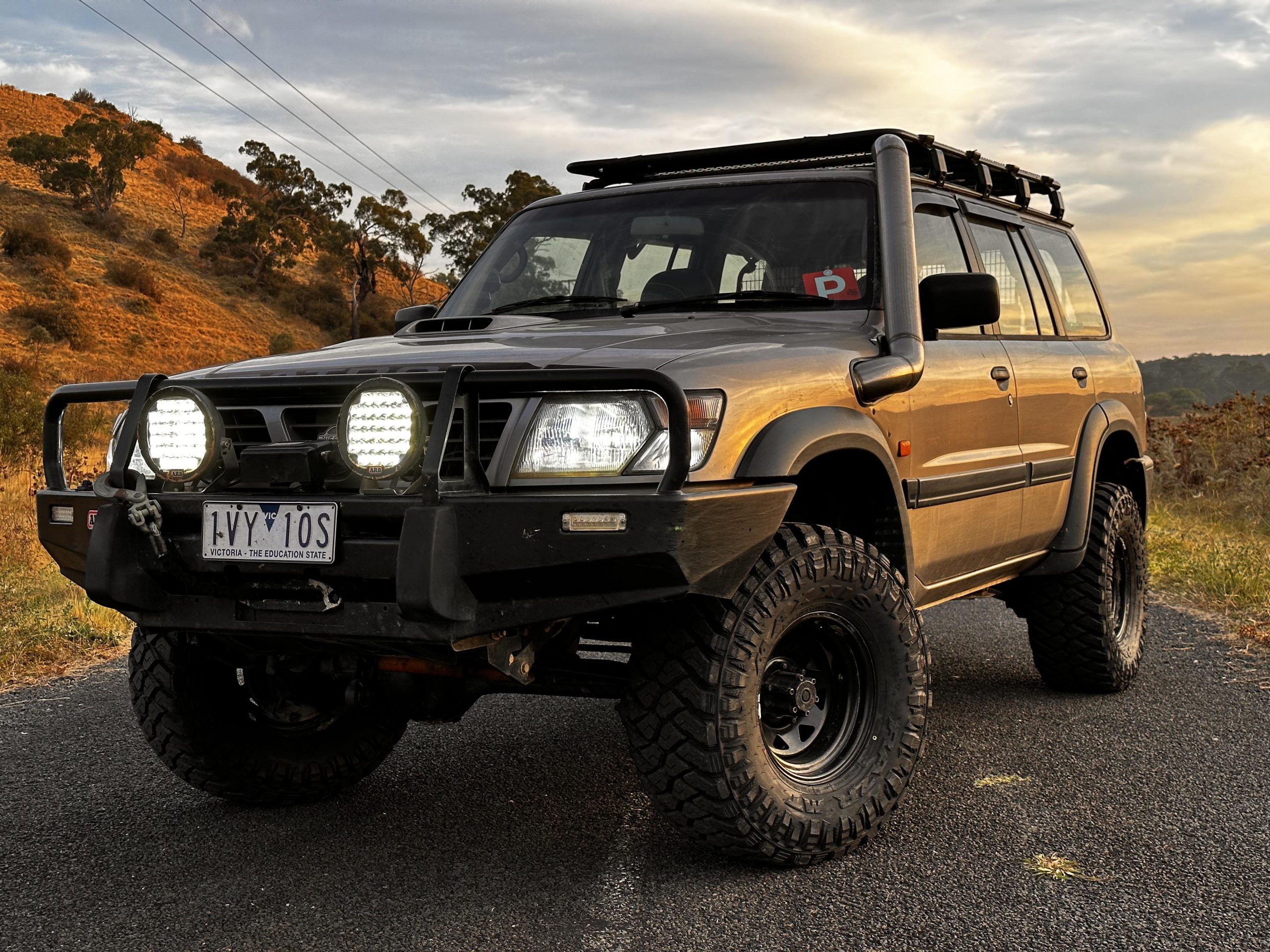
7. Nissan Patrol (Y60 and Y61 Series)
The Nissan Patrol, particularly the Y60 (1987–1997) and Y61 (1997–2016) generations, is highly regarded in many remote regions worldwide, from the Australian Outback to the deserts of the Middle East and the rugged landscapes of Africa.
Its reputation for toughness, reliability, and simplicity makes it an excellent vehicle for environments where professional mechanic support is limited or nonexistent. The Patrol’s design philosophy emphasizes durability and ease of maintenance, with large, accessible engine bays and straightforward mechanical systems that can be serviced with basic tools and minimal diagnostic equipment.
One of the most compelling aspects of the Patrol is its engine lineup, which includes robust inline-six gasoline and diesel units known for their torque and reliability. These engines are built to endure high mileage and harsh conditions, running efficiently on lower-grade fuels that might be the only option in remote areas.
The Patrol’s diesel variants, such as the TB42 and the RD28, are renowned for their longevity and capacity to handle heavy loads or towing, essential for off-grid work like farming, mining, or expeditions. This combination of power and endurance allows the vehicle to be pushed hard for extended periods without frequent breakdowns, reducing the reliance on mechanics.
The Patrol’s chassis and drivetrain are designed to excel off-road, featuring a sturdy ladder frame, solid axles, and leaf springs or coil springs, depending on the model year, which provide excellent articulation and load-carrying capability. Four-wheel drive is standard, often with a low-range transfer case, and some models come with locking differentials, allowing drivers to tackle slippery or uneven terrain with confidence.
The vehicle’s large size and ample ground clearance make it ideal for crossing rivers, climbing steep hills, and navigating rocky trails that are common in remote wilderness areas. Moreover, its generous interior and cargo space allow for transporting equipment, supplies, or passengers, making it versatile for both work and adventure.
Another key advantage of the Nissan Patrol is the global community and parts availability, which supports owners living far from official dealerships or mechanics. Because the Patrol has been a favored vehicle in so many remote and challenging environments, a broad aftermarket ecosystem has developed around it.
This includes replacement parts, upgrade kits, and maintenance advice specifically tailored for off-road use and remote operation. The vehicle’s mechanical simplicity also encourages hands-on maintenance, with many owners learning to perform repairs themselves to extend the Patrol’s service life. This blend of durability, simplicity, and global support solidifies the Nissan Patrol Y60 and Y61 as essential vehicles for those living or traveling where mechanics are a luxury.
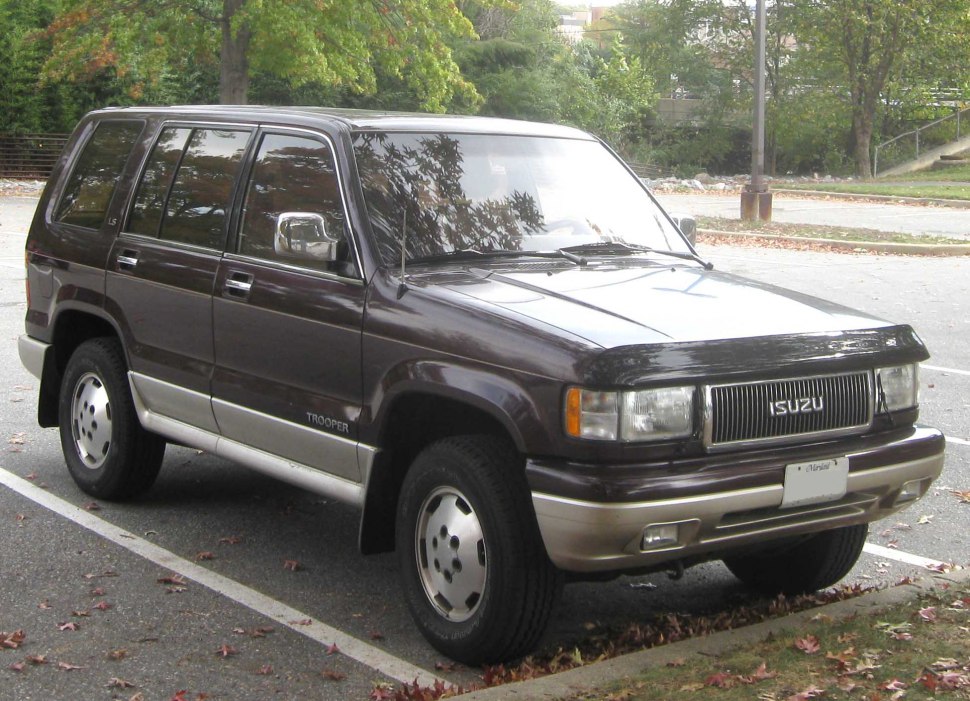
8. Isuzu Trooper (First and Second Generations)
The Isuzu Trooper, particularly its first (1981–1991) and second (1991–2002) generations, is a rugged SUV that has earned respect among those who require durable and easily repairable vehicles in remote locations. It offers a rare combination of mechanical reliability, off-road capability, and practicality that make it a valuable asset when professional mechanic services are inaccessible.
Unlike many contemporary SUVs that rely heavily on electronics, the Trooper’s design centers on simplicity and robustness, featuring straightforward powertrains and drivetrain components that can be serviced or repaired in the field.
Isuzu’s reputation for building tough diesel engines is reflected in the Trooper’s lineup, which includes several inline-four and V6 engines known for their longevity and ability to operate on lower-quality fuel. Diesel models, in particular, are favored for their fuel efficiency, torque, and ease of maintenance, with many components designed for quick access and repair.
This mechanical simplicity is especially advantageous in remote areas where access to professional diagnostic tools is limited. Common maintenance tasks such as fuel filter replacement, valve adjustments, and timing belt changes can often be performed by vehicle owners or local mechanics using basic tools, significantly reducing downtime and repair costs.
The Trooper’s off-road credentials come from its solid axle suspension, high ground clearance, and rugged chassis construction. These features enable it to handle challenging terrain such as rocky trails, muddy paths, and steep inclines with confidence.
Additionally, many Troopers are equipped with part-time four-wheel drive and low-range gearing, which enhances their ability to tackle extreme conditions and provides extra traction when needed. The vehicle’s relatively compact dimensions also allow it to maneuver through narrow trails or dense forest areas, making it suitable for a wide range of remote environments.
Moreover, the Isuzu Trooper benefits from a solid aftermarket support network and a dedicated community of owners and enthusiasts. This network helps provide information on repairs, sourcing parts, and upgrading vehicles for improved reliability and off-road performance.
Its durable build quality and mechanical simplicity have allowed many Troopers to continue operating reliably for hundreds of thousands of miles, often in some of the most remote corners of the world. This makes the Isuzu Trooper a practical, durable, and manageable choice for anyone who needs dependable transportation far from mechanic services.
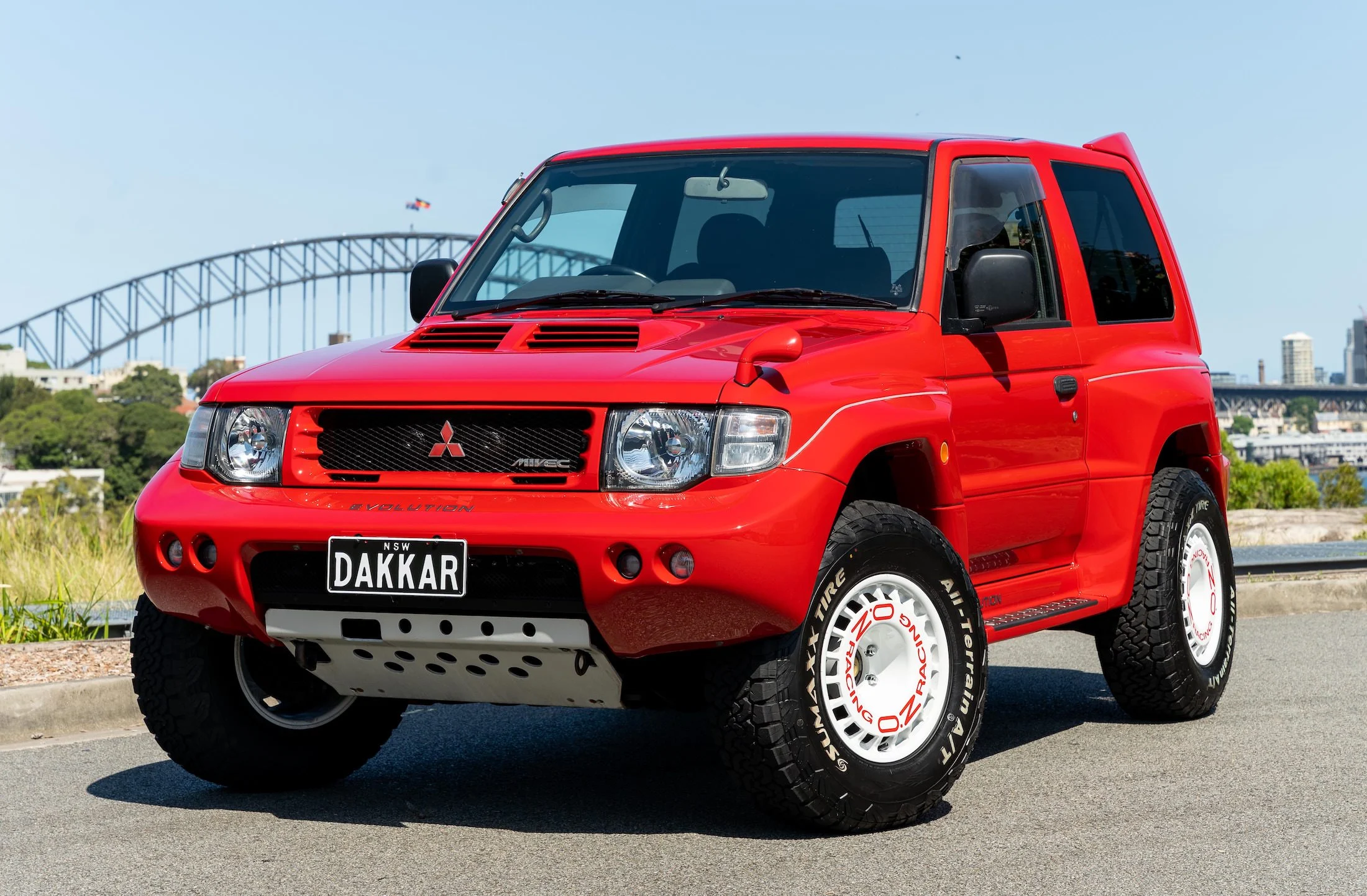
9. Mitsubishi Pajero (Older Generations)
The Mitsubishi Pajero, particularly its first and second generations (1982–2006), has been a favorite for overlanders, rural residents, and adventurers who require a rugged, dependable vehicle capable of enduring harsh environments without frequent visits to a mechanic.
Known for its strong off-road capability and straightforward mechanical design, the Pajero is a practical choice for those living or traveling in remote areas where professional repair facilities are scarce or nonexistent. The vehicle balances durability with a certain level of comfort, making it suitable for long journeys across rough terrain.
One of the key advantages of the older Pajero models is their engine lineup, which often includes robust gasoline and diesel engines known for reliability and relatively simple design. Diesel versions, in particular, are praised for their fuel efficiency and torque, making them well-suited to the demands of off-road driving and hauling.
These engines are designed to tolerate lower-grade fuels, which are frequently the only options in remote or less developed regions. The Pajero’s mechanical systems, including the fuel and ignition systems, are generally free from overly complex electronics, allowing owners to perform maintenance and troubleshooting using basic tools and mechanical knowledge.
The Pajero’s chassis and suspension provide strong off-road performance thanks to a rugged ladder frame and a suspension system designed to absorb shocks from uneven terrain.
Many models come equipped with part-time four-wheel drive, low-range gearing, and sometimes locking differentials, enabling them to tackle a wide variety of challenging conditions such as mud, sand, rocks, and snow. Its relatively spacious interior and cargo capacity allow for carrying camping gear, supplies, or passengers comfortably, which is vital for extended trips in isolated areas.
Furthermore, the Pajero benefits from a global presence and a robust aftermarket ecosystem that supports owners living far from urban centers. Spare parts, accessories, and upgrade kits are widely available, and many communities exist to share maintenance advice, repair tips, and off-road modification ideas.
The combination of durability, ease of repair, and off-road capability makes the Mitsubishi Pajero a strong contender for anyone needing a reliable vehicle in remote areas where professional mechanics are hard to find.
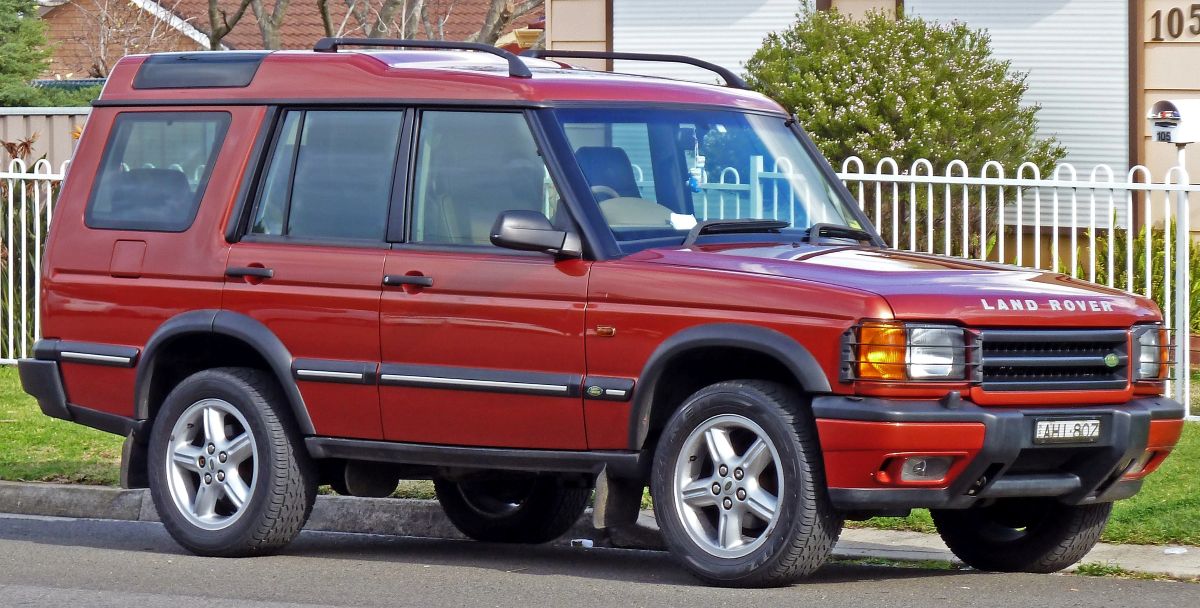
10. Land Rover Discovery Series I and II
The Land Rover Discovery Series I (1989–1998) and II (1998–2004) represent a balance between Land Rover’s legendary off-road prowess and increased comfort and refinement.
While these vehicles introduced more electronic features compared to the Defender, they remain popular among off-road enthusiasts and remote-area residents due to their robust mechanical underpinnings and manageable complexity. When maintained properly, the Discovery can be an excellent vehicle for remote areas, providing versatility, space, and capability.
The Discovery’s engine options, which include reliable V8 petrol and turbocharged diesel engines, provide ample power and torque for off-road excursions and heavy loads. These engines, especially the 4.0-liter V8 petrol and the 2.5-liter Td5 diesel, have a reputation for durability when serviced regularly.
The Td5 diesel engine, although more electronically complex than some older diesels, is still regarded as robust and repairable with the right knowledge and tools. Despite the inclusion of more electronic components than in earlier Land Rovers, the Discovery’s mechanical systems are still accessible enough to allow repairs outside of specialized workshops, which is critical in remote areas.
Chassis-wise, the Discovery benefits from a strong ladder frame and coil-spring suspension that offers a balance of comfort and off-road capability. The vehicle’s four-wheel-drive system includes low-range gearing, which improves traction and control on difficult terrain, such as loose gravel, deep mud, or steep inclines.
While the added electronics do introduce more points of potential failure compared to simpler vehicles, many owners have successfully maintained and repaired Discoveries in remote environments by focusing on preventive maintenance and learning to troubleshoot the more common electronic issues.
The Discovery’s interior space and versatility make it especially useful for long trips or extended stays in remote locations. Its seating and cargo configurations can accommodate families, groups, or large loads of gear, enhancing its appeal as an overland vehicle.
Additionally, the widespread popularity of the Discovery means there is a strong community and aftermarket support that helps owners find parts, share repair advice, and modify their vehicles to better suit off-road needs. For those prepared to invest time in learning the vehicle’s systems, the Land Rover Discovery Series I and II remain capable, reliable options for remote area travel and living.
Also Read: 5 Cars With Remote Kill Features and 5 That Keep Running After Theft
In the vast and often unforgiving landscapes where professional mechanic services are rare or nonexistent, the choice of vehicle transcends mere convenience—it becomes a critical component of self-reliance and safety.
The vehicles featured in this article have earned their places through decades of proven performance, rugged durability, and mechanical simplicity that empower their owners to maintain and repair them under challenging conditions. They are more than machines; they are tools for survival, independence, and adventure in some of the most remote corners of the world.
One of the common threads that ties these ten vehicles together is their emphasis on mechanical accessibility. In remote areas, complexity is the enemy—systems laden with electronic sensors and computer controls may offer enhanced performance in cities but become liabilities in the backcountry.
By contrast, vehicles like the Toyota Land Cruiser, Jeep Wrangler, and Land Rover Defender use straightforward engines and drivetrains designed to be serviceable with minimal tools and mechanical expertise. This philosophy not only reduces the likelihood of debilitating breakdowns but also enables owners to diagnose and fix issues on the spot, minimizing downtime and keeping them on the move.
Another critical aspect is the availability of parts and community support. Many of these vehicles have global reputations and long production histories, which means spare parts can often be found even in distant regions or sourced through robust aftermarket channels.
The global communities of owners and enthusiasts also play an invaluable role, sharing repair tips, modification advice, and solutions tailored to remote environments. This collective knowledge turns mechanical challenges into manageable tasks and helps maintain these vehicles as reliable assets across generations.
Off-road capability is another hallmark of these vehicles. Their robust chassis, solid axles, high ground clearance, and four-wheel-drive systems enable them to navigate rough terrain that would immobilize ordinary cars. Whether it’s crossing rocky riverbeds, climbing steep mountain trails, or slogging through muddy forest paths, these vehicles are built to perform in conditions where breakdowns carry serious risks.
Their design often prioritizes durability over luxury, resulting in interiors and components that withstand dust, moisture, and heavy use, factors critical to long-term reliability in the wild.
Beyond their technical qualities, these vehicles carry stories and traditions of resilience and adventure. They have served farmers, explorers, aid workers, and nomads, becoming trusted companions in the daily struggle against nature’s unpredictability.
Their reputations are forged not only in factories but in the real-world experiences of countless users who depend on them far from paved roads and service centers. For anyone planning to live, work, or explore in remote areas, understanding and choosing the right vehicle from this list is about more than transportation—it’s about investing in peace of mind, self-sufficiency, and the freedom to venture where few others can go.
While newer vehicles often boast advanced technology and luxury features, the vehicles detailed here remind us that sometimes, the best solution is the simplest one. Their enduring presence in the harshest environments underscores the value of durability, repairability, and community support.
These principles are vital for those who cannot rely on quick roadside assistance or nearby mechanic shops, and they ensure that, no matter where the road—or lack thereof—leads, these cars remain steadfast.
In conclusion, the perfect car for remote areas with no mechanics combines ruggedness, mechanical simplicity, off-road capability, and global support. The Toyota Land Cruiser, Jeep Wrangler, Land Rover Defender, Ford F-150, Suzuki Jimny, Mercedes-Benz G-Class, Nissan Patrol, Isuzu Trooper, Mitsubishi Pajero, and Land Rover Discovery each exemplify these qualities in their unique ways.
Choosing among them depends on individual needs, terrain, and preferences, but all offer a solid foundation for reliable mobility in places where self-reliance is not just a virtue—it is a necessity. With one of these vehicles, you are equipped not just for the journey, but for the unpredictable challenges that come with life off the beaten path.
